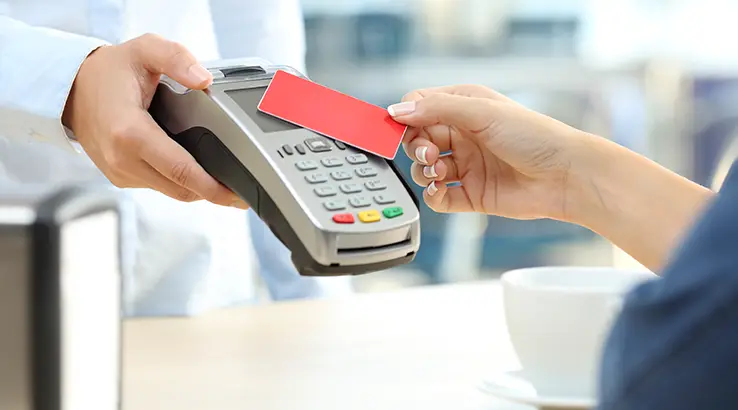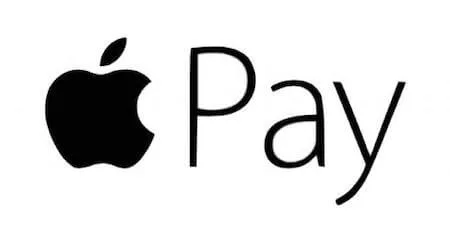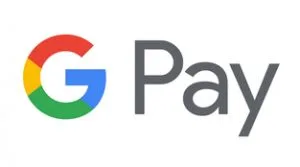Contactless payments are a modern way to pay for your everyday purchases with one simple touch. To enjoy this benefit, you need to wave or tap your card, wearable payment device or smartphone in front of a contactless terminal. There’s no requirement to enter your PIN or sign a receipt to authorise a transaction.
Although it may seem like a fairly new technology, it has been used in the UK since 2007. The rising popularity of contactless payments for transactions under £100 means that Brits are moving ever closer to living in a cashless society. In fact, UK Finance estimated that a third of all payments made in the UK in 2021 used contactless.
How do contactless payments work?
Contactless payments use Near Field Communication (NFC), which allows two devices to securely transmit and receive information by bringing them within 4cm of each other. It’s an upgrade to the existing radio-frequency identification (RFID) technology, which combines the interface of a smartcard and a reader into a single device. As an example, RFID is used by Transport for London’s Oyster Card ticketing system.
If you see the contactless symbol, it means you can make contactless payments of up to £100. All three networks – Mastercard, Visa and American Express – offer contactless payment technology. Sometimes referred to as “tap and pay”, consumers can either wave or tap their credit cards at counters or card machines with contactless terminals without entering a PIN or signing a receipt. For larger transactions of over £100, you are usually required to enter your PIN. After you have tapped or waved, wait a few seconds for a green light or “approved” to show up to confirm that the transaction has gone through. You won’t always get a receipt so be sure to ask for one if you require a record of your transaction.
Contactless devices include:
- Debit, credit or pre-paid cards
- Mobile devices, such as smartphones and tablets (which use mobile payment systems such as Apple Pay, Google Pay or Samsung Pay)
- Wearable devices, such as watches and wristbands
- Key fobs
- Stickers
It’s worth noting that mobile payment devices usually don’t have a payment limit because they require an extra level of identification, such as a PIN, face scan or fingerprint.
What are the pros and cons of contactless payments?
Pros
- Convenient. You just need to tap your card or mobile phone and you don’t need to enter a PIN or sign a receipt. This saves you time and doesn’t cost you any extra money.
- Peace of mind. You’re protected against fraudulent transactions, and retailers no longer have access to your credit card information.
- Reduces the threat of hackers. Hackers are usually able to scan your card to steal valuable information, but NFC technology uses data encryption when sending sensitive information.
- No typing errors. You don’t have to worry about incorrectly typing in your PIN, and the connection is quicker on contactless terminals.
- Easy to use overseas. You can use contactless payments abroad if the retailer offers it, although the spending limit may vary depending on the local currency. Be aware: foreign transaction fees could still apply.
- Shorter queues. Convenient and quick payments mean fewer queues at the checkout.
Cons
- Some risk. If you lose your credit card, your account may be compromised.
- Easy to lose track of spending. It’s easy to spend money when all you have to do is tap, and you don’t always receive a receipt. Make sure to regularly check your bank statement for potential errors or fraudulent transactions.
- Risk of spyware or malware attacks and other viruses. Like any computer device, the payments terminal is at risk of viruses.
- The limit is set. You can’t change or choose the maximum spending limit. This is chosen by your bank.
- Confusing bank statements. Some retailers may use a different trading name so transactions could look confusing when they come up on your bank statement.
- Consider your credit rating. If you’ve got a poor credit rating, your provider may not offer you a contactless card.

Compare cards by type
Finder Score for credit cards
To make comparing even easier we came up with the Finder Score. Costs, perks and suitability across 120+ cards are all weighted and scaled to produce a score out of 10. The higher the score the better the card – simple.
Read the full methodologyFinder Score for credit cards
To make comparing even easier we came up with the Finder Score. Costs, perks and suitability across 120+ cards are all weighted and scaled to produce a score out of 10. The higher the score the better the card – simple.
Read the full methodologyFinder Score for credit cards
To make comparing even easier we came up with the Finder Score. Costs, perks and suitability across 120+ cards are all weighted and scaled to produce a score out of 10. The higher the score the better the card – simple.
Read the full methodologyFinder Score for credit cards
To make comparing even easier we came up with the Finder Score. Costs, perks and suitability across 120+ cards are all weighted and scaled to produce a score out of 10. The higher the score the better the card – simple.
Read the full methodologyFinder Score for credit cards
To make comparing even easier we came up with the Finder Score. Costs, perks and suitability across 120+ cards are all weighted and scaled to produce a score out of 10. The higher the score the better the card – simple.
Read the full methodologyApple Pay
Using a credit card with Apple Pay

- Which devices are compatible with Apple Pay? Apple Pay is only available on Apple devices. It is supported on newer model iPhones, iPads, Apple Watches and Macs. If you’re on an older iPhone device that runs an older iOS variant, you’ll have to update if you want to access Apple Pay.
- Which banks support Apple Pay? A wide variety of UK banks support Apple Pay, including Barclays, Halifax, HSBC, Lloyds, Nationwide and NatWest. If your preferred bank hasn’t launched Apple Pay yet, it might be wiser to wait for it to adopt the technology rather than to apply for the card now.
- What features do I need to consider? Just like any other type of credit card, you’ll want to consider the rates, fees and perks of the different types of cards that boast Apple Pay.
Google Pay
Using a credit card with Google Pay

- Which devices are compatible with Google Pay? Almost all Android smartphones with NFC (Near Field Communication) can take advantage of Google Pay.
- Which banks support Google Pay? Google Pay is supported by Mastercard and Visa credit cards from a wide range of UK banks including Halifax, HSBC, Nationwide, Lloyds Bank, MBMA and M&S Bank.
- What features do I need to consider? Just like any other type of credit card, you’ll want to consider the rates, fees and perks of the different types of cards that boast Google Pay.
Frequently asked questions
More guides on Finder
-
Finder Credit Cards Customer Satisfaction Awards 2025
The results of our 2025 Finder Credit Card Customers Satisfaction Awards are in! Find out the winner and most recommended providers.
-
Best credit cards to use abroad in 2025
Pick a card with 0% foreign fees and save big. We’ve rated 20+ cards for spending abroad and listed our top 5.
-
What is the average credit card APR in the UK?
We look at the average APR on credit cards in the UK and how credit card interest rates have changed over time.
-
What’s Monzo Flex and should you get your hands on one?
Find out how to spread your purchases over 3, 6 or 12 months with Monzo Flex.
-
Credit card statistics and trends UK
We look at the latest statistics on credit card ownership and spending in the UK. Here’s what we found.
-
Finder Credit Cards Customer Satisfaction Awards 2020
We reveal the winners and runners-up in our 2020 Customer Satisfaction Awards.
-
Methodology for rating credit cards
Get all the details on how we rate the credit cards we review. We look at costs, fees, features and how well a card performs compared to the rest of the market.
-
Zempler Credit Card (formerly Cashplus) review
This invitation-only credit card makes a solid option if you’re trying to improve your credit score. Here’s how it works.
-
Where do Brits go on holiday?: Popular travel destinations
Where do UK residents go on holiday and how many overseas visits do we take? We look at the latest outbound tourism statistics.
-
Compare 0% purchase credit cards
Buy now and pay interest later with a 0% purchase credit card. Compare current offers with 0% p.a. on purchases.
